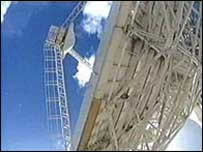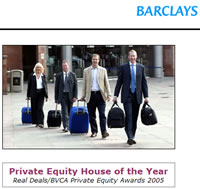 Uk broadcaster, Channel 4, has launched High Definition broadcast of their channel, distributed on using the Sky satellite platform.
Uk broadcaster, Channel 4, has launched High Definition broadcast of their channel, distributed on using the Sky satellite platform.
No prizes for guessing the name for it – Channel 4 HD.
(more…)
Any service delivered by satellite
 Uk broadcaster, Channel 4, has launched High Definition broadcast of their channel, distributed on using the Sky satellite platform.
Uk broadcaster, Channel 4, has launched High Definition broadcast of their channel, distributed on using the Sky satellite platform.
No prizes for guessing the name for it – Channel 4 HD.
(more…)
 Today marks the 50th anniversary of the launch of Sputnik by what was then the Soviet Union.
Today marks the 50th anniversary of the launch of Sputnik by what was then the Soviet Union.
It’s the date that the first man-made object was placed in to geocentric orbit, going around the world in a elliptical path.
(more…)
On the day after news of the date of the first English town to start to go full digital on the delivery of TV, we’re reminded by HDforAll that Ofcom currently doesn’t have plans to set aside any of the freed up frequencies for HDTV usage.
 Despite a successful trial run in London during 2006, where HD was delivered over Freeview, the only available ways currently to watch HDTV is via Sky satellite or cable.
Despite a successful trial run in London during 2006, where HD was delivered over Freeview, the only available ways currently to watch HDTV is via Sky satellite or cable.
One of the major reasons that the UK Government, and in turn, Ofcom is so keen for transferring everyone from the current analogue TV service to digital, is that it will free up large swathes of frequency. Ofcom’s plans are to auction this, and other frequencies off to the highest bidder, as we’ve covered a couple of times.
Not wishing to be left out of the HD world, the BBC are also keen to not just rely on Freeview delivering HD and to this end the BBC Trust have been given a provisional Yes for a FreeSat service capable to deliver their HD.
 HDForAll are a pressure group made up of TV manufacturers, retailers and public service broadcasters including DSGI, Samsung, Sony and Toshiba and BBC, ITV, Channel 4 and Five. They’re keen to remind people that there’s only a limited amount of time left to contact Ofcom to make their views known on auctioning off spectrum to the highest bidder. Background on this and how to respond are available on Ofcom’s site.
HDForAll are a pressure group made up of TV manufacturers, retailers and public service broadcasters including DSGI, Samsung, Sony and Toshiba and BBC, ITV, Channel 4 and Five. They’re keen to remind people that there’s only a limited amount of time left to contact Ofcom to make their views known on auctioning off spectrum to the highest bidder. Background on this and how to respond are available on Ofcom’s site.
The public appear to be behind having HDTV on Freeview, nearly 5,000 have signed an e-petition (now closed) and there’s another one urging that
spectrum be made available for citizen and community uses – a la open access cable in the US.
A survey carried out at the end of last year, also found that the vast majority of people, no matter what platform they use, want HD to be available on Freeview – 96% of Freeview, 91% satellite and 92% cable users.
 Research house iSupply are predicting that IPTV will be boosting the reveneue generated by the premium video services market from its current level of less than $200Bn to a whopping $277Bn by 2010.
Research house iSupply are predicting that IPTV will be boosting the reveneue generated by the premium video services market from its current level of less than $200Bn to a whopping $277Bn by 2010.
Their definition of the premium video services market takes in pay-TV, mobile video, DVD, broadband video and theatre/box office receipts, but when advertising revenues are added, the total market reaches a stunning $370Bn.
iSupply see IPTV growing at frankly amazing rates. In 2005 they saw IPTV worth $681m and, with their estimate of a Compound Annual Growth Rate (CAGR) of 103 percent (!), see it reaching a calculator-busting £23.5Bn in 2010.
It appears that they see the public’s willingness to pay for content expanding significantly. Strange, but we and our other tech-aware pals are finding ourselves just not watching that much mainstream content – even if it is available on-demand.
 That aside, iSupply see the battle royal between two big, hairy beasts – the current pay-TV world of direct-to-home satellite and digital and analogue cable TV services – and the telcos who will be pushing quad-play.
That aside, iSupply see the battle royal between two big, hairy beasts – the current pay-TV world of direct-to-home satellite and digital and analogue cable TV services – and the telcos who will be pushing quad-play.
On the physical format side, iSupply point out that DVD sales are slowing, and will continue to do so, with the decline over the next 3-4 years being as much as 15 percent to 20 percent.
One very interesting point that is raised by them is
With most movie libraries and television series already on DVD, Hollywood studios are generating more than half of their revenues from DVDs—and are running out of new content to sell, making this an issue of paramount importance to them. One cause of the DVD sales deceleration is the fact that consumers have become more price-sensitive, believing that the average DVD cost of $20 is too expensive, especially compared to renting.
It’s not clear where this leaves Blu-Ray and HD-DVD – both on the price of the media (which is expected to be higher than DVD) and on the material that is available. Given Hollywood’s slow ability to make new material, and that most of it will have been sold on DVD already – it’s not clear if the new formats will help them.
The BBC have been talking about launching a free satellite service since before 2004. Very cleverly they labelled it Freesat.
 Since then, we’ve returned to it a number of times, as it appeared to drop from the general BBC conversation.
Since then, we’ve returned to it a number of times, as it appeared to drop from the general BBC conversation.
Well it’s back in the news now, as the BBC Trust has reached a provisional decision on Freesat. Their view is one of support and have opened a 28 day public consultation prior to making its final decision in April 2007.
They foresee the satellite being shared among the UK broadcasters and guarantee that it will remain free after a one-off initial payment to cover the cost of equipment and installation.
There are problems with the much-trumpeted digital switch-over in the UK. Many areas are not covered by the digital transmitters because they are located in a remote area or that the geography of the area blocks the transmissions – in fact over half of those yet to switch (3.5 million homes) fall outside the Freeview coverage area. Satellite-delivered services do not suffer from these problems.
To date BSkyB has been the only company offering satellite delivery in the UK, indeed the BBC is carried on it. The proposal of FreeSat isn’t without impact.
As Acting BBC Chairman Chitra Bharucha put it, “We have considered the market impact and whilst there may be some negative effects, in our view these should be balanced against the potential positive market impact of greater choice. Overall, we believe a “Freesat” service to be in the public interest and we hope that other public service broadcasters would join the BBC in a joint venture.”
There’s additional benefits beyond coverage, that of delivery of HD signals, which currently it isn’t practical to do countrywide over Freeview.
Those wishing to comment should get over to the public consultation.
 The planned buy out of the satellite interests of BT Media and Broadcast, the division within UK giant, British Telecom, that operates ‘business to business’ broadcasting industry interests, has fallen at the final fence.
The planned buy out of the satellite interests of BT Media and Broadcast, the division within UK giant, British Telecom, that operates ‘business to business’ broadcasting industry interests, has fallen at the final fence.
After long and protracted negotiations that we here at Digital Lifestyles have been covering for the last six months, we can reveal here that the deal will not go through. Rumours have been rife for the last week or so after Barclays Private Equity (BPE) failed to get the necessary agreements to cut suppliers costs.
 BT like other large telco’s is finding itself with more Satellite capacity than it can usefully manage, remains committed to a sale and is now considering the long term future of some of its’ other major earth stations.
BT like other large telco’s is finding itself with more Satellite capacity than it can usefully manage, remains committed to a sale and is now considering the long term future of some of its’ other major earth stations.
The failure of the negotiations that valued the sale at around £80m, is expected to enable key players from both sides to ‘spend more time with their families’ and staff who had elected to join the new company that Barclays were putting together, face a prolonged period of uncertainty while “reserve bidders” are consulted, including a further interested private equity outfit.
 As you may recall, we first reported the sale of BT’s Media and Broadcast division (or BTM&B as it’s known internally) and its TV satellite interests at the turn of the year. Since then detailed negotiations have been ongoing, with around 200 staff worldwide expected to be moving away from the comfy world of BT, to the more exposed waters of a private equity-driven outfit. We’ve heard that it’s expected to be known as Bright Star.
As you may recall, we first reported the sale of BT’s Media and Broadcast division (or BTM&B as it’s known internally) and its TV satellite interests at the turn of the year. Since then detailed negotiations have been ongoing, with around 200 staff worldwide expected to be moving away from the comfy world of BT, to the more exposed waters of a private equity-driven outfit. We’ve heard that it’s expected to be known as Bright Star.
The new enterprise centred around Satellite Occasional use and satellite TV multiplexs will be headed up by Mark Smith who was the boss of what was, a couple of years back, BT Broadcast Services. Joining Mark there will be some new hires alongside those former BT folks, described as ‘in-scope’ who we understand have decided to take a sweetener of around £4,500 to transfer their skills and experience to the fledgling outfit.
It is expected that initially BT’s Media and Broadcast customers will notice little difference as BT continue to offer a wrap that includes satellite expertise. Beyond that, Bright Star will be looking at other opportunities not limited to BT’s customers.
The new business will include satellite earth stations in the UK, France and the USA but it is as yet unclear where the operation will be headquartered. Currently BT’s M&B operates out of the iconic BT Tower.
 The transfer and negotiations around the unit are likely to have given BT some food for thought as to how they can manage the disposal of business units they do not see as key, or that are giving rates of return below the main business’s targets.
The transfer and negotiations around the unit are likely to have given BT some food for thought as to how they can manage the disposal of business units they do not see as key, or that are giving rates of return below the main business’s targets.
After such protracted negotiations it will be interesting to see if a more bottom line-focused business emerges and if BT attempts similar transfers around the peripheries of its empire in the future.
 Sky News are very proud of what they’re billing as the Highest Ever Video News Podcast (or HEVNP to all of you acronym manufacturers out there).
Sky News are very proud of what they’re billing as the Highest Ever Video News Podcast (or HEVNP to all of you acronym manufacturers out there).
We genuinely do admire reporter Gerard Tubb and producer Jon Gripton who are doing the video pieces from the slopes of Everest. They’re joining the 21 UK Army mountaineers from the regular UK and territorial armies (Special forces of some sort, we’d wager) who are aiming to get to the top via one of the toughest routes, The West Ridge – also worthy of huge admiration.
Tubb and Gripton have been in training for three months and have been using oxygen-reducing respirators to alter their blood so it can cope with life at high altitude. Tubb has also been to the Alps to be taught ice-climbing and crevasse rescue techniques by legendary mountaineer and mountain guide, Twid Turner (great name), who trained the expedition team.
From the report we’ve already seen, it’s rather cold there, especially at night where temperatures are dropping to -1c. Even if you don’t happen to freeze to death, we don’t envy finding yourself waking up every 10 mins during the night with the feeling that you’re drowning. As Tubb’s says on the blog “the depressed CO2 levels can make you stop breathing until it builds up and triggers a fit of hyperventilation.” Nice.
We’re not ones to pick nit (well, OK we are), and we’re certainly not deriding the amazing accomplishment of what they’re doing, but as to whether they’re the highest? Rumours are abound that people have seen higher vodcasts shot on location in Amsterdam, and others insist that they’ve seen other shot in planes (but that’s not on the Earth is it).
 What kit to take to Everest?
What kit to take to Everest?
OK … We’d imagine that after reading this, you all planning your own assent of Everest, right?
Question number one, before you get to pick a splendid new jacket, is what tech kit you need to take with you? Clearly it’s pretty specialist.
You’d imagine that it would be something with a huge keyboard, so you can type while wearing huge mittens. Well you’d be wrong clever sticks.
The laptop of choice is the Panasonic Toughbook. We’d been really impressed when we’d had this at Digital-Lifestyles towers. It’s got great features like the hard drives sit in a bath of oil that gets pre-heated to a temperature it can work at. In this case they’re not using those drives. They also chose them as reliability is top priority, as there aren’t too many laptop repair shops on the Everest slopes.
 The video is being shot on two cameras, both Sony’s, the HVR-Z1, or Z1 as it’s know in the trade and the HVR-A1 (A1), having the advantage that it’s really small – pretty useful when you’re having to lug it up Everest.
The video is being shot on two cameras, both Sony’s, the HVR-Z1, or Z1 as it’s know in the trade and the HVR-A1 (A1), having the advantage that it’s really small – pretty useful when you’re having to lug it up Everest.
Once shot, the video has some light editing done on the Toughbooks using Avid Express. The video is then fired back via a satellite dish at Base Camp to Sky HQ.
Cool bits from the Army
The army’s really gone to tech town on this one, with great stuff like providing Google Earth place holders showing things like the teams routes and amazingly cool, dynamically updated team positions.
The army aren’t just leaving the videocasts to Sky, they’ve got a lot of their own sitting on the podcast section of their site. Some of them are pretty interesting.
Good to see that even the army uses the tried and tested ‘hold your comms device in the air to get reception’ trick that we’ve all used at one time or another.
Also pleasing to see that the Junior team contains a fair number of women in it.
To top it off, they’re also doing exclusive videos to your mobile for free.
 The story we’ve been reporting, on BT’s off loading of its unprofitable operations within the (M&B) unit is hotting up. Barclays PE (that’s Private Equity to you and me) is in a period of negotiation with M&B, to complete the deal where they take ownership of Occasional Use; generally outside events that includes Wimbledon tennis coverage and the uplinks of many TV and radio channels to the Sky digital platforms.
The story we’ve been reporting, on BT’s off loading of its unprofitable operations within the (M&B) unit is hotting up. Barclays PE (that’s Private Equity to you and me) is in a period of negotiation with M&B, to complete the deal where they take ownership of Occasional Use; generally outside events that includes Wimbledon tennis coverage and the uplinks of many TV and radio channels to the Sky digital platforms.
Barclay’s are looking to guarantee no compulsory redundancies, for three years, for the 100 plus staff that come across with the deal, and are planning to invest heavily in the future technologies like High Definition television, that they expect to drive broadcasting industry growth in the future.
![]() The problem is that BT staffers are unhappy at being bundled in with the sale and have worries that long term they could see a reduction in the conditions they enjoy. One of their unions, the CWU, has now after balloting, threatened strike action, hoping to change BT’s management’s attitude to those described as ‘in scope’ by the potential deal.
The problem is that BT staffers are unhappy at being bundled in with the sale and have worries that long term they could see a reduction in the conditions they enjoy. One of their unions, the CWU, has now after balloting, threatened strike action, hoping to change BT’s management’s attitude to those described as ‘in scope’ by the potential deal.
The strike would hit contracted live events carried by both ITV and Sky, the coverage likely to be blacked out would include Grand Prix racing and Soccer games that are scheduled between 8th and 12th of March.
 Now to us here at Digital Lifestyles, this threatened action seems to have a bit of a King Canute/70’s vibe about it. The truth of the matter, is that the competitive landscape has changed in telecommunications and broadcasting. BT is answerable to their city shareholders, and a move to tackle some of the entrenched attitudes within the company’s workforce might be looked on favourably by the number crunchers around the London stock exchange.
Now to us here at Digital Lifestyles, this threatened action seems to have a bit of a King Canute/70’s vibe about it. The truth of the matter, is that the competitive landscape has changed in telecommunications and broadcasting. BT is answerable to their city shareholders, and a move to tackle some of the entrenched attitudes within the company’s workforce might be looked on favourably by the number crunchers around the London stock exchange.